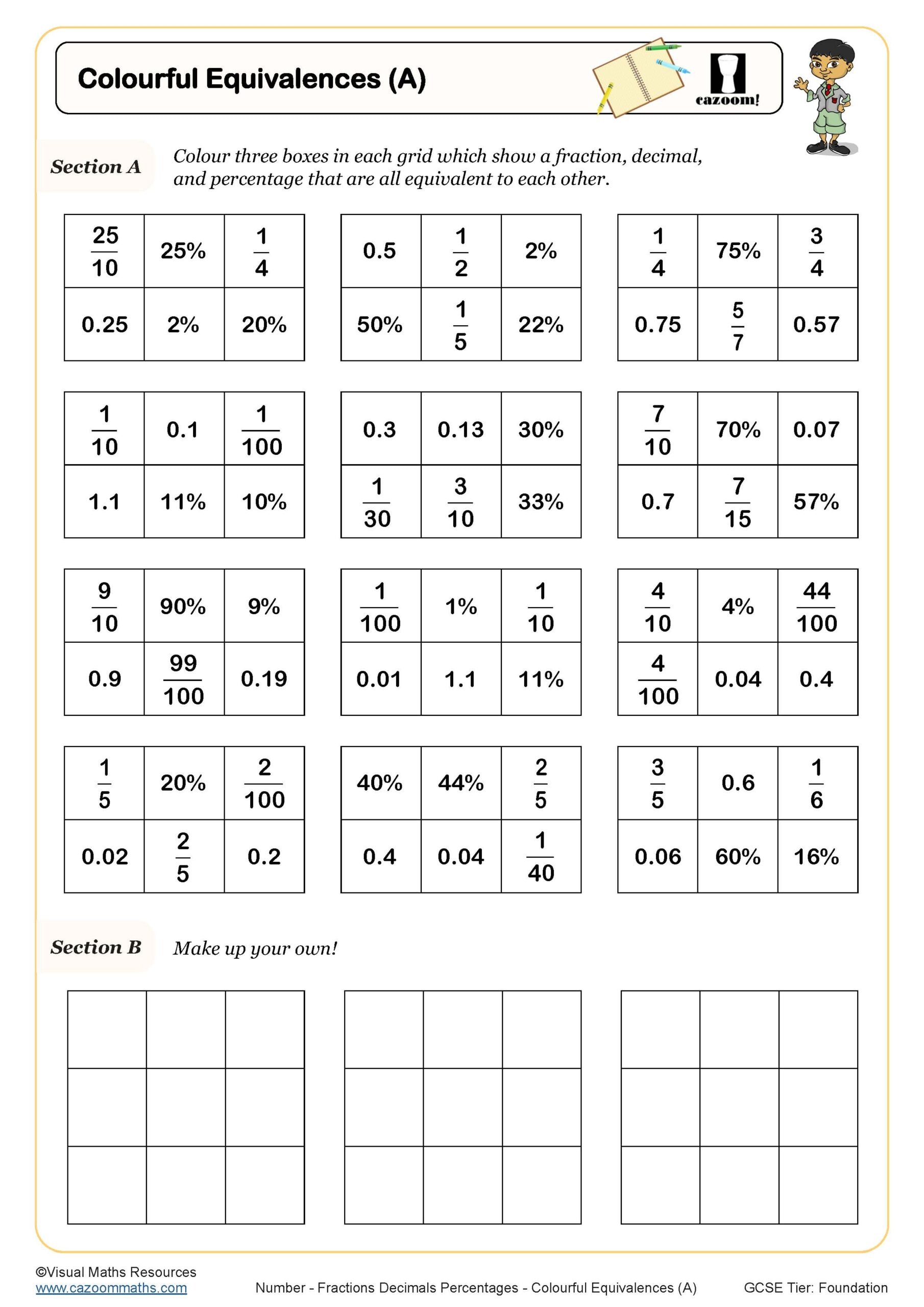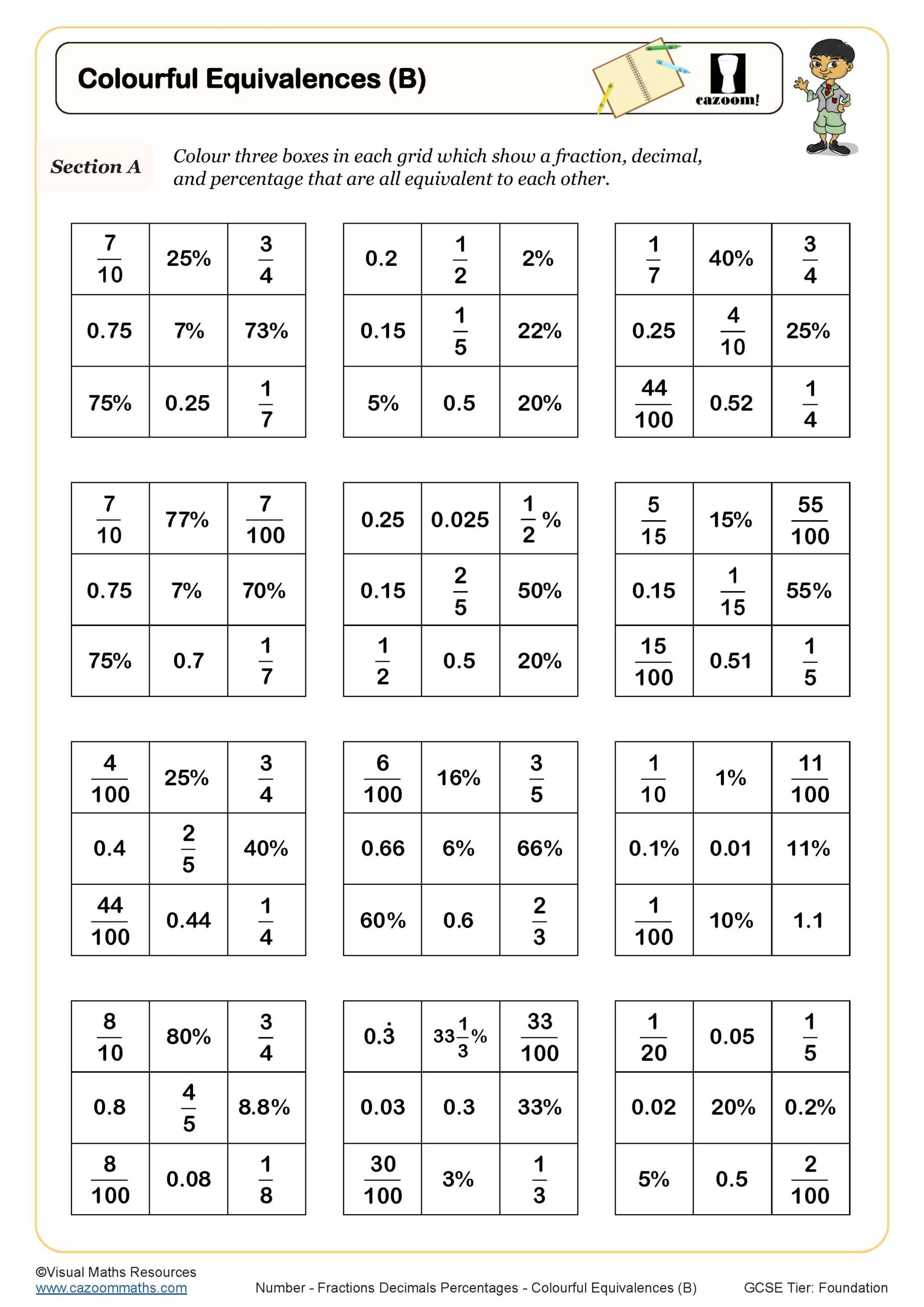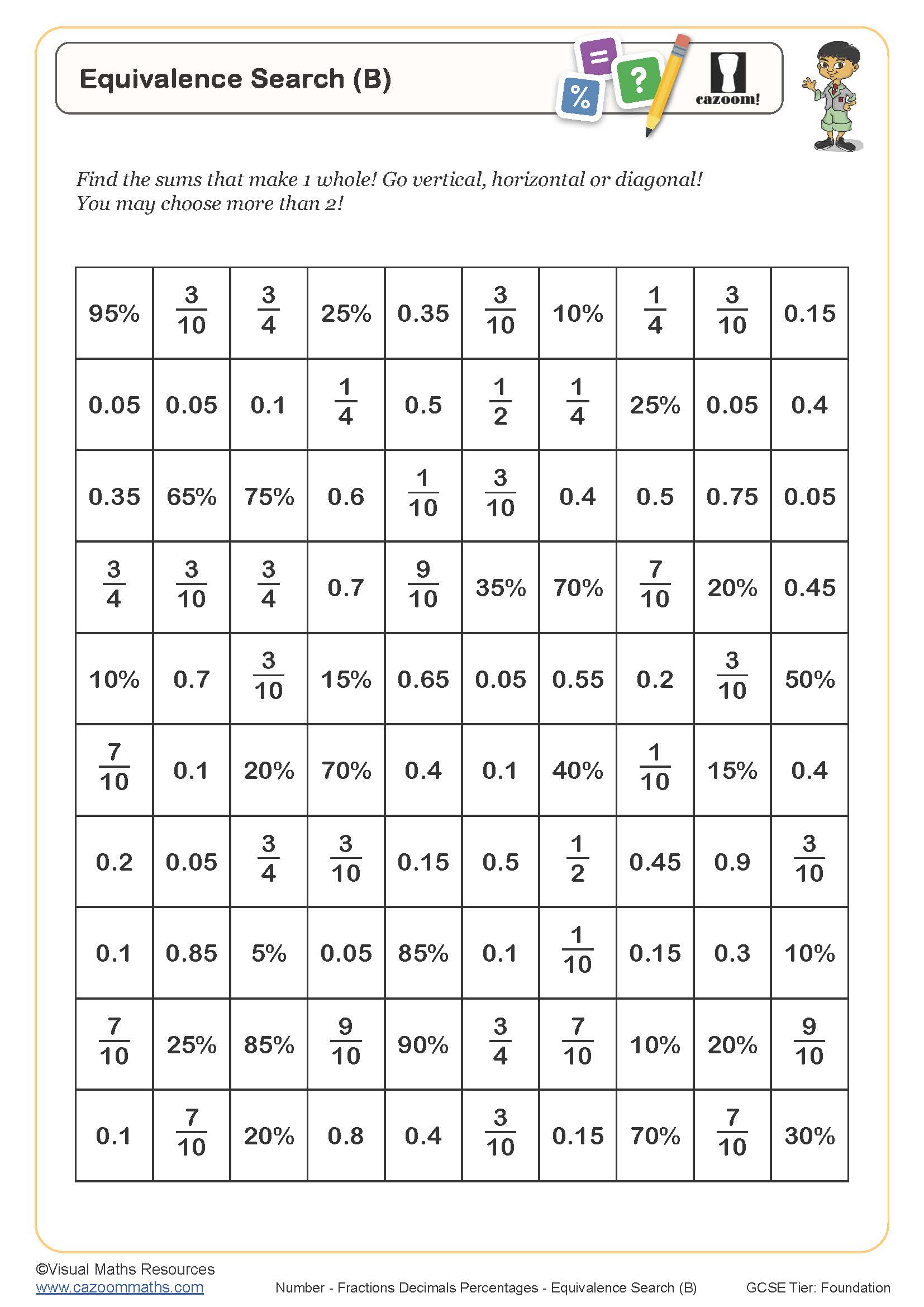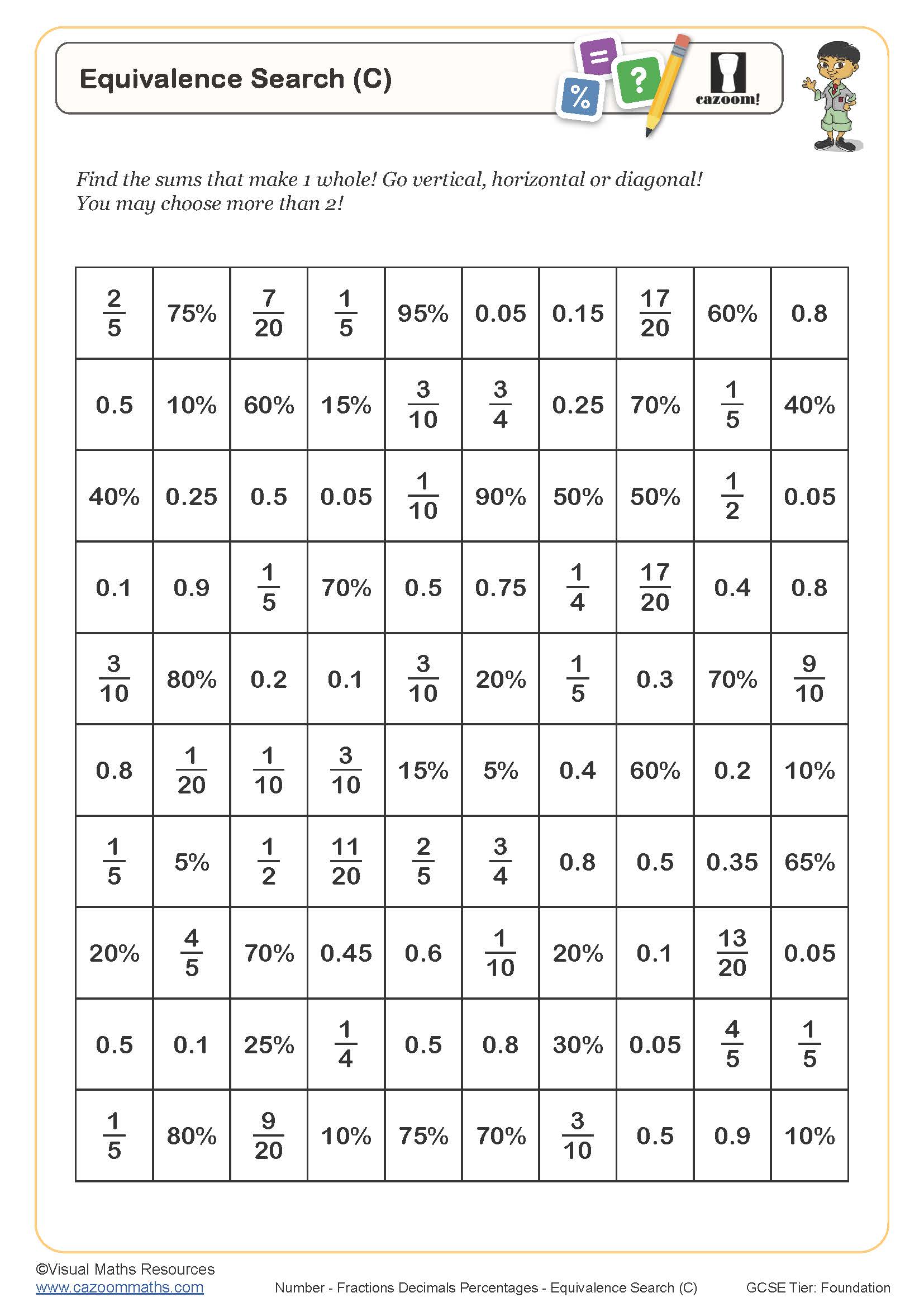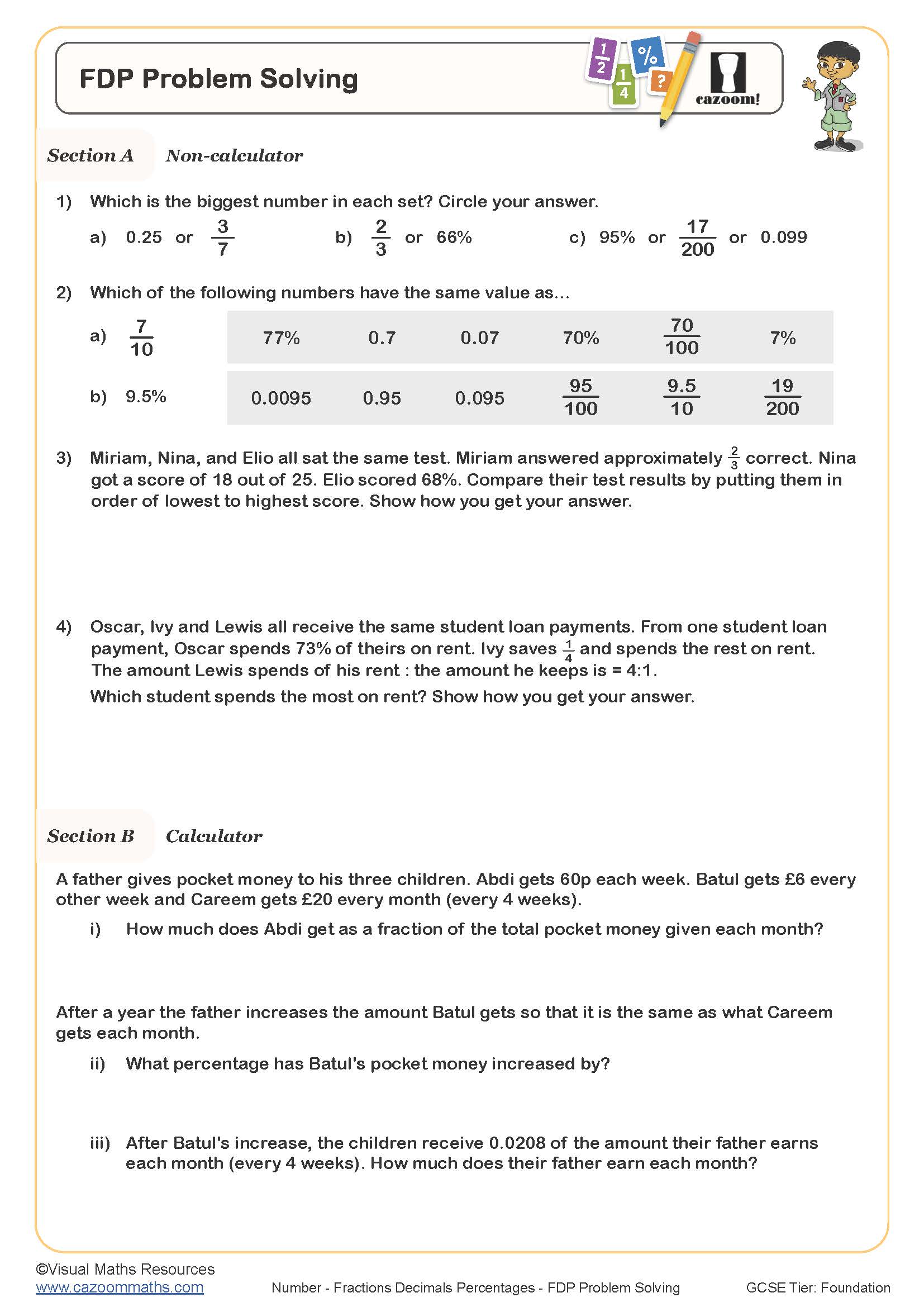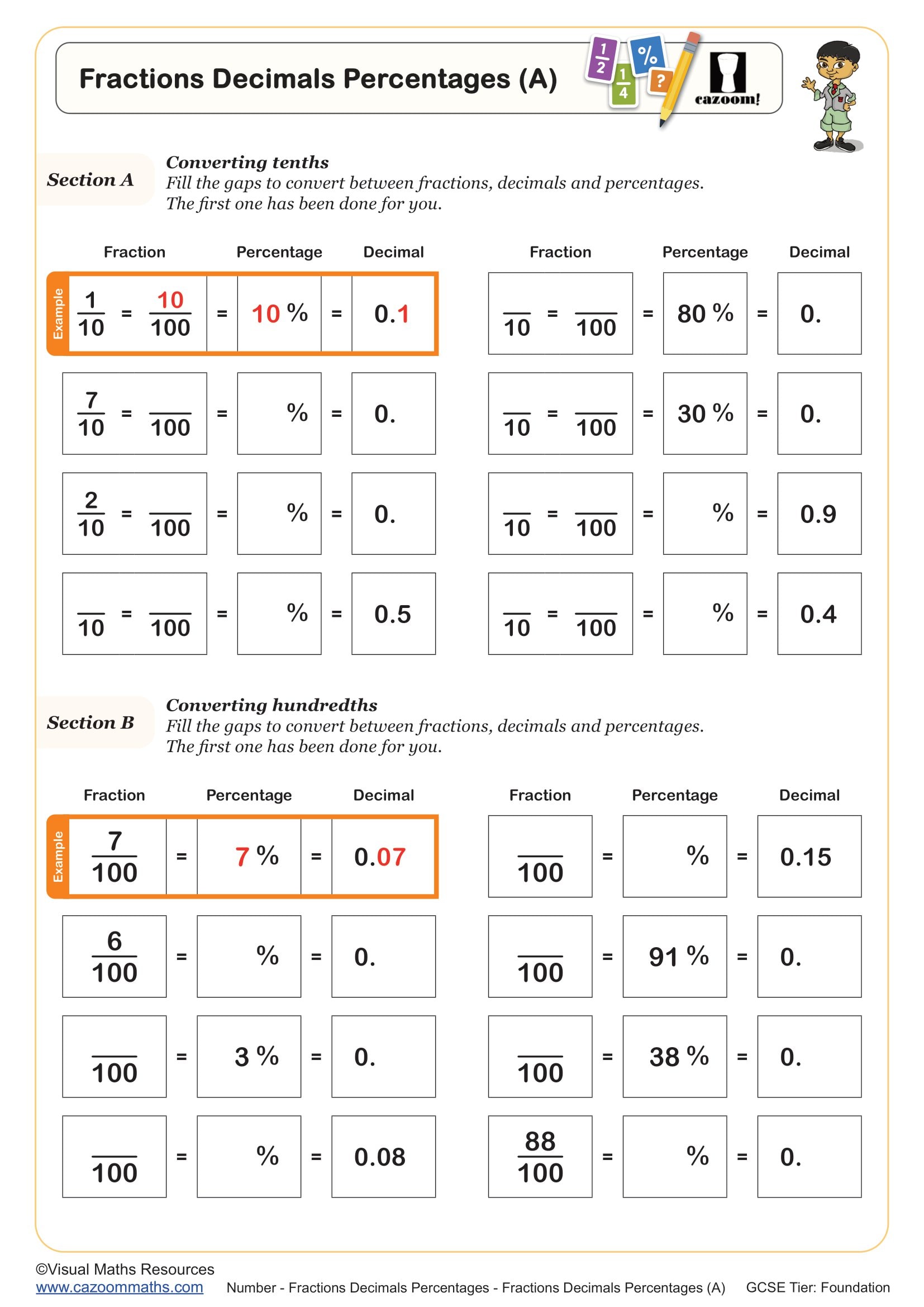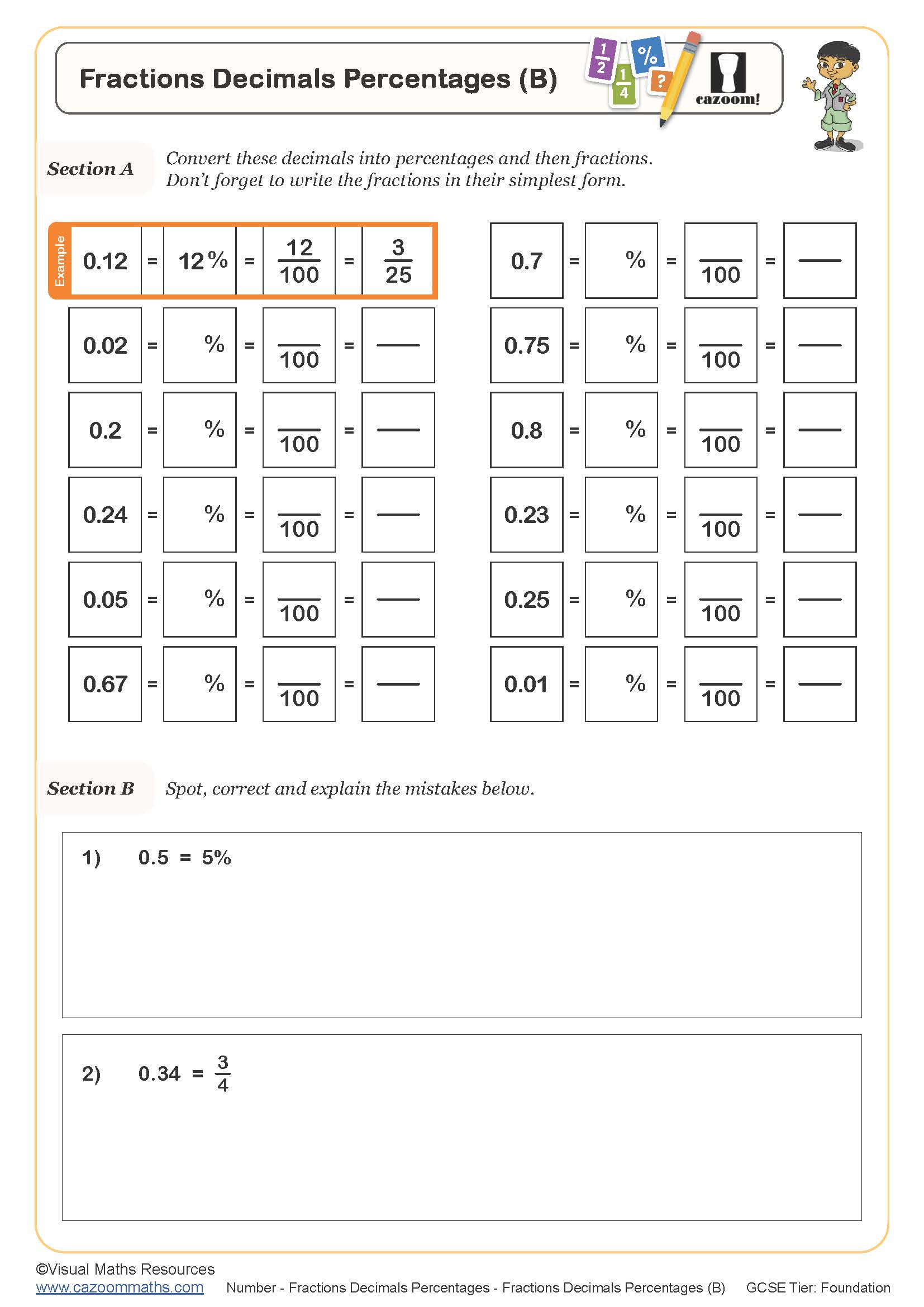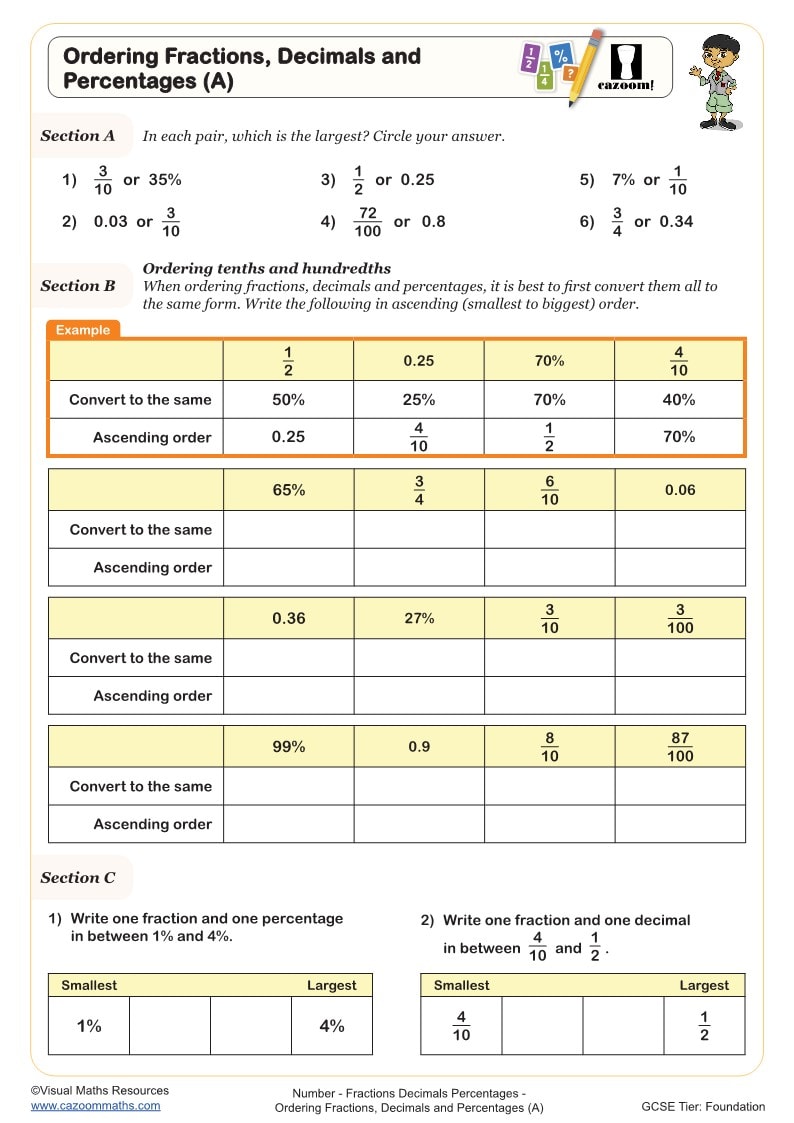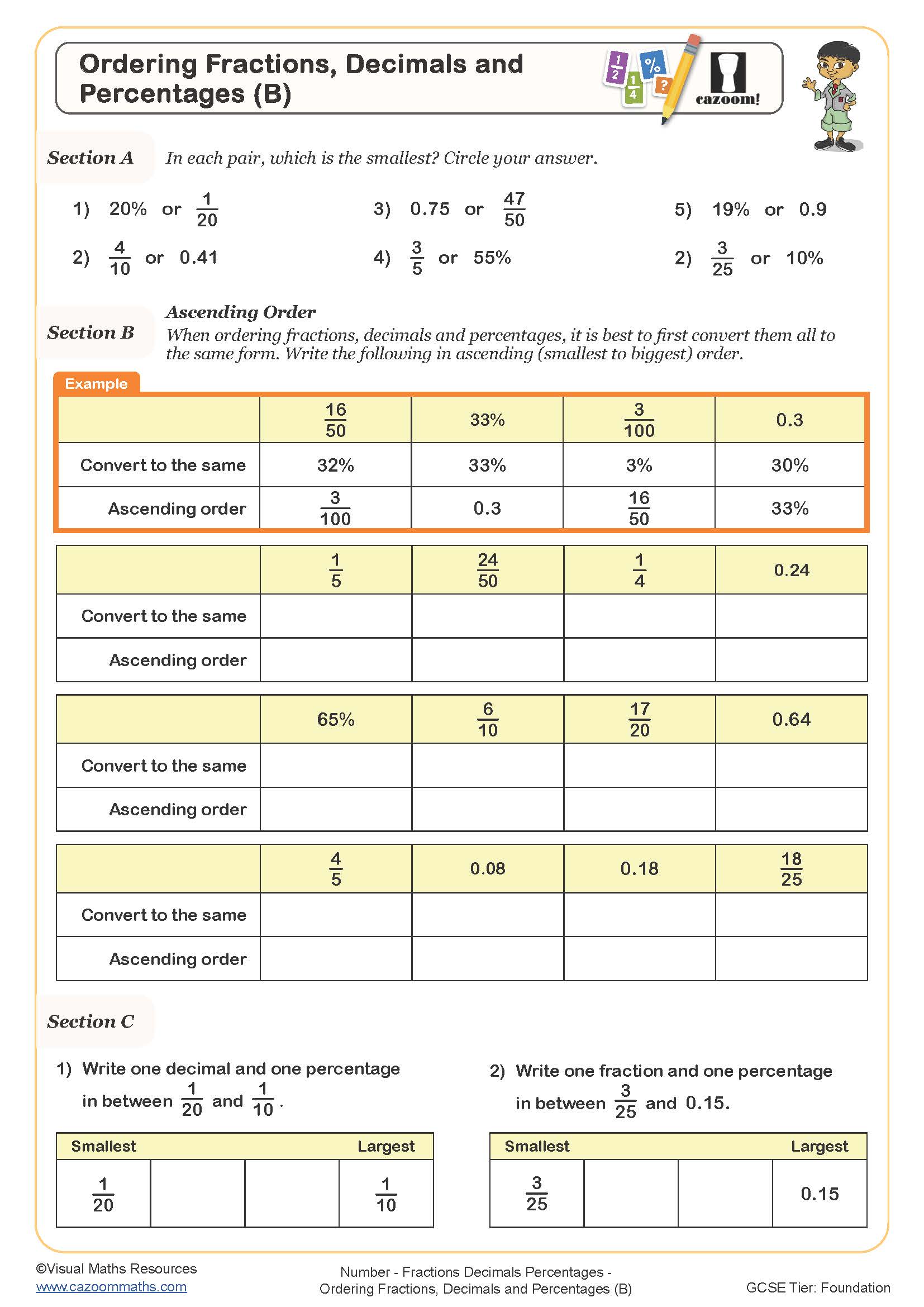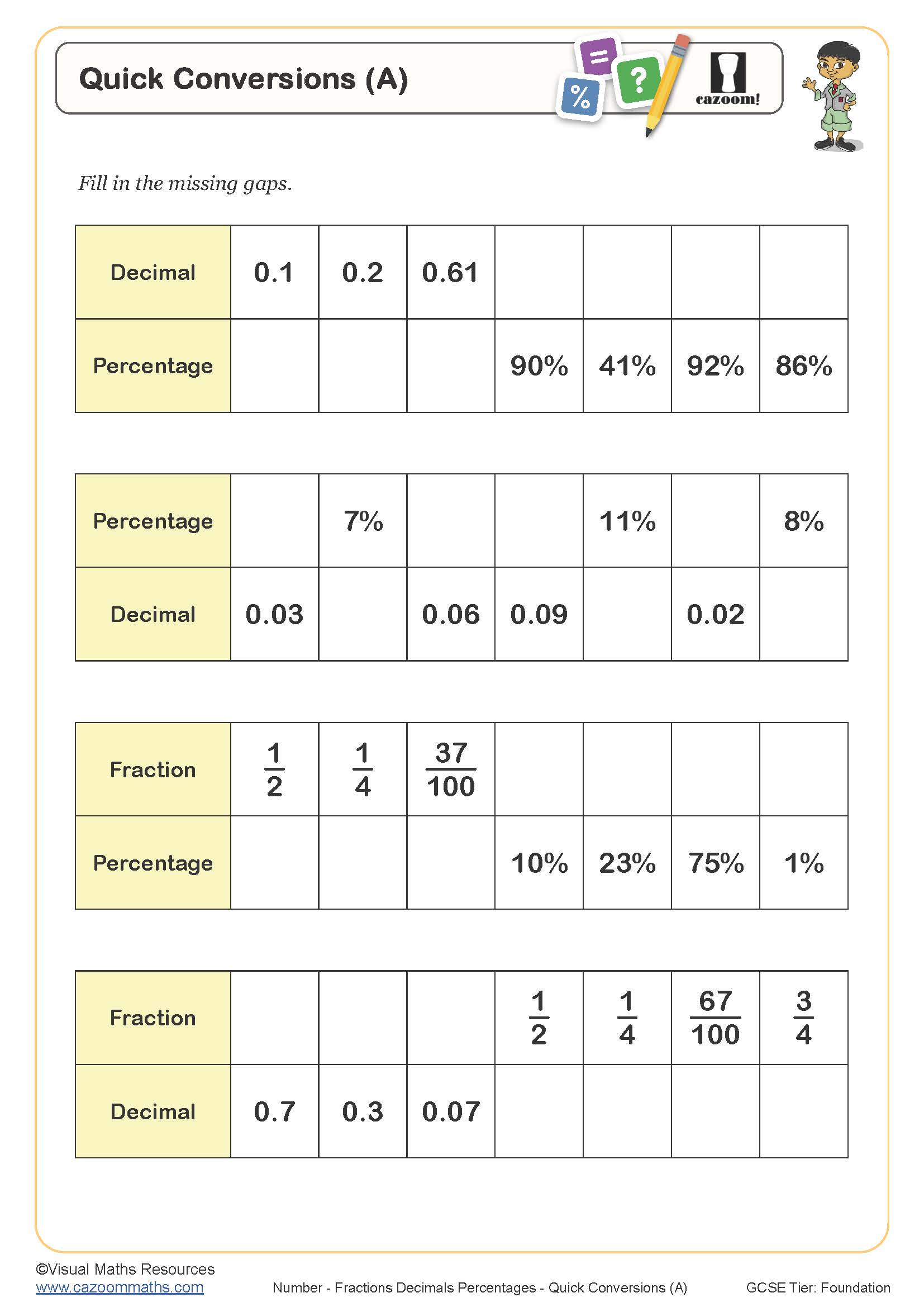Year 8 Fractions, Decimals and Percentages Worksheets
Achieve Better Accuracy With Ready-to-use Year 8 FDP Worksheets
Your secondary school students need a strategic approach to advance from Year 7 foundational knowledge to complex applications through progressively advanced concepts in Year 8. Students develop mathematical fluency by understanding that fractions and decimals and percentages form connected concepts rather than studying them as separate subjects. Students develop both procedural skills and conceptual understanding through regular practice of these worksheets. The structured approach helps students avoid understanding gaps when they solve multi-step problems that require conversions and calculations. Students develop the ability to move between different representations while choosing the most suitable approach for each mathematical problem.
Specific learning benefits include:
• Converting fluently between fractions, decimals and percentages
• Calculating percentage increases and decreases
• Working confidently with recurring decimals
• Solving complex ratio problems
• Interpreting data using proportional reasoning
• Developing algebraic thinking through fraction manipulation
• Preparing for financial mathematics topics
Curriculum Coverage: Worksheet Topics and Skills Your KS3 Students Will Learn
Scaffolding progresses from visual representations and familiar contexts towards abstract manipulation and formal notation. Each worksheet includes worked solutions demonstrating multiple solution strategies, helping students understand not just the answer but the reasoning process. Problems build systematically from single-step conversions to multi-stage applications requiring strategic thinking.
The core skills covered include:
• Equivalent fractions – simplifying and finding common denominators
• Percentage calculations – finding percentages of amounts using multipliers
• Decimal operations – multiplying and dividing by powers of 10
• Fraction arithmetic – adding and subtracting mixed numbers efficiently
• Recurring decimals – converting between fraction and decimal notation
• Percentage change – calculating original values and compound changes
• Ratio and proportion – sharing quantities and scaling problems
• Order of operations – combining FDP with algebraic expressions
• Problem-solving – applying FDP knowledge to worded questions
Support Your Child’s Learning With Year 8 Fractions, Decimals and Percentages Worksheets
Our classroom-tested materials help Year 8 students by providing entry-level content for struggling learners and additional challenges for advanced students within typical groups. The worksheets strike a balance between procedural practice and conceptual exploration because they follow contemporary teaching methods for developing mathematical proficiency. The worksheets serve secondary schools immediately because they need no preparation and work with multiple teaching methods from direct instruction to independent discovery. The worksheets contain built-in differentiation because they offer various difficulty levels which enable students to learn at their individual speeds. The answer sheets help teachers save time during grading while maintaining strict assessment standards. The Cazoom Maths worksheets integrate perfectly with existing schemes of work by providing additional content that avoids repetition of textbook material.
Why Real-Life Maths Starts With Year 8 FDP Worksheets
Mathematical concepts gain meaning when students recognise their practical value beyond classroom exercises. Understanding percentages, fractions, and decimals opens doors to interpreting information critically in everyday situations.
• Personal finance – interest rates, discounts, and budget planning
• Data interpretation – understanding statistics in news reports
• Cooking and nutrition – scaling recipes and reading food labels
• Gaming and probability – calculating odds and success rates
• Engineering and design – precise measurements and scale drawings
• Business studies – profit margins and market share analysis
• Scientific investigation – expressing experimental results accurately
• Travel planning – currency conversion and distance calculations
